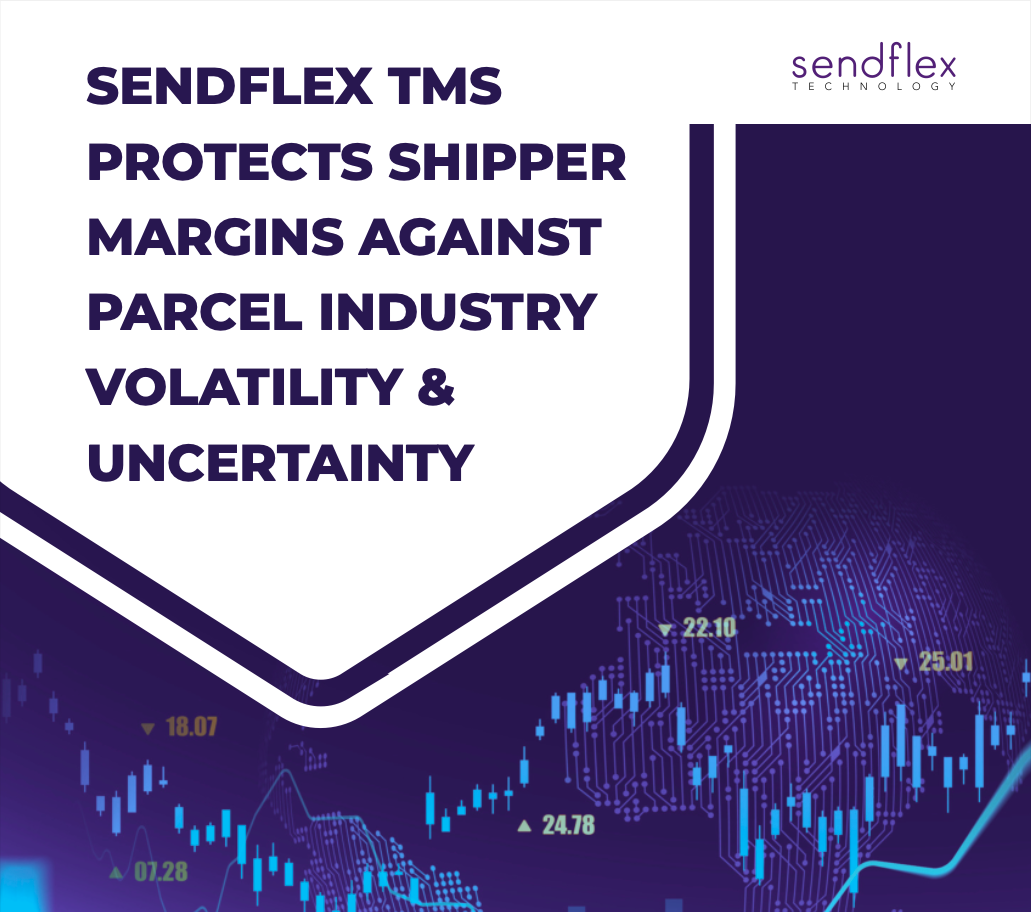Why Fast Shipping Isn’t the Whole Strategy: Reinventing Parcel Ops from the Inside Out
More than half of supply chain leaders are turning to AI and advanced analytics to manage rising costs and complexity, according to Gartner. The message is clear: fast shipping alone won’t solve today’s challenges. Shipping needs to evolve beyond printing labels to systems that think ahead and make smarter decisions before a package even hits the dock.

The Execution Trap: When Throughput Hides Margin Erosion
For years, shipping operations revolved around one core metric: how fast boxes could get out the door. But in today’s omnichannel environment where customer promises, cost pressure, and fulfillment complexity collide, that model starts to show its cracks.
“The real question is: how do shippers narrow the gap that's been growing between expected costs all through that journey of the order—from pre-order to order allocation, to fulfillment and the invoice process?”
— Bob Malley, CEO, Sendflex
Focusing solely on automation often hides deeper inefficiencies. Poor cartonization, overlooked SLAs, and misaligned routing decisions can quietly erode margins, even when everything looks “fast” on paper.
Predictive Rating: Real-Time Decisions Without API Bottlenecks
Carrier APIs were meant to streamline rate shopping. In practice, they often add friction, introducing throttling, overuse penalties, and lag time. That’s why the next generation of shipping optimization is moving away from dependency on carrier APIs.
“We developed an optimization layer on top of that shipping execution layer… That optimization layer doesn’t use carrier APIs to do rating and so forth. We can rate—we bench-tested—30 million rates per second.”
— Bob Malley, CEO, Sendflex
Instead of waiting on carrier systems, Sendflex’s optimization engine uses in-platform predictive rating—forecasting likely landed costs using variables like surcharges, cartonization, floating discounts, and historical cost variances. This gives systems the power to act instantly and intelligently across OMS, WMS, or wave planning processes.
Why Most Parcel Costing Still Misses the Mark
For many retailers, the gap between expected shipping costs and what they’re invoiced for exceeds 15%. This persistent “cost variance” is one of the biggest culprits behind shrinking margins.
Why is it so hard to control? Because most systems aren’t designed to calculate landed costs in real time. They rely on averages, batch updates, or default routing rules. That’s not fast enough for modern commerce—where milliseconds can influence cart conversions and wave planning decisions.
“In every engagement we have, it’s the number one question: How can you help us reduce that gap between expected versus landed costs that end up on a carrier invoice?”
— Bob Malley, CEO, Sendflex
The goal isn’t just to spot the variance after it happens. It’s to predict where and why it’s likely to happen and take corrective action before the label is printed. That’s what predictive rating unlocks: the ability to simulate outcomes, optimize in real time, and protect margin before the order leaves the facility.
Carrier Diversity: A Cost Control Strategy in Disguise
Sticking with one carrier often means sacrificing flexibility—dealing with blackout periods, static rate tiers, or penalties for volume changes. A diverse carrier strategy turns transportation into a lever for cost control and agility.
“We have optimization instructions that cover how to pack a carton, track where a shipper stands in their discount tier, monitor that during execution, and consider regional carriers once volume commitments are met.”
— Bob Malley, CEO, Sendflex
This kind of embedded logic isn’t reactive—it’s preemptive. It allows shipping systems to weigh discount tiers, accessorial risk, and service reliability before selecting a carrier, helping shippers balance both cost and performance without disruption.
Why Smart Shippers Think Upstream
Fast throughput is still table stakes. But the real edge is in what happens upstream—before the box is packed or a label is generated.
“It’s a flywheel at this point. You need the label, the manifest software, but it’s the decisions upstream that matter now.”
— Ninaad Acharya, Co-Founder and CEO, Fulfillment IQ
This is where predictive rating, routing logic, and margin intelligence converge. Systems that simulate millions of rate and service combinations upfront—not after execution—help shippers adjust dynamically and stay ahead of costs.
Listen to our full conversation with Bob Malley on smarter parcel execution HERE. For shippers who want to optimize upstream and protect margin downstream, the Sendflex team is ready to help.

EBOOK
Controlling parcel costs requires a new approach, one that can easily adapt to a rapidly changing environment with intelligent decision-making at every stage of fulfillment. To protect their margins, shippers need to close the gap between expected vs. actual costs without compromising operational efficiency or customer service levels.
This eBook explores:
- Where and why margin erosion occurs in parcel shipping and how to diagnose it.
- How modern parcel TMS platforms can operationalize decision intelligence to accurately predict and control costs.
- Examples of how Sendflex has helped shippers conquer complexity and protect their margins.
DELIVERY CONSULTATION
See What Sendflex Can Do for You
Are you struggling to keep up with the consumer demand for faster, cheaper delivery service options? Is it time for a smart multi-carrier parcel solution?
Whether deployed on premise or accessed from the cloud, our shipping platform apps and APIs support your entire extended enterprise: carrier selection, rating and routing, cartonization, shipping and drop shipping, tracking, and returns.
